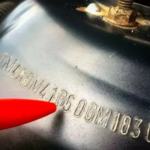Most wooden elements gather on glue. Very little carpentry joints or collected wooden elements are kept due to only their configuration, if it is not specifically designed for this (as in cases of collapsible furniture or some very intricate Japanese Sovdmnmi). For example, “Lastochkin’s tail” was originally a demiasia and held in a prefabricated form using nails. Until recently, the adhesives tended to lose their properties over time, and the furniture could fall apart. Today, eternal gluing in woodworking is also known as in metalworking, where epoxy adhesives are often used instead of welding. Modern carpentry maple is stronger than the surrounding wood fiber, and if something breaks down, it is unlikely to happen by gluing.
Clutching can vary in complexity from simple ralving to a smooth edge with a grinding (two parts are glued along the edge with friction against each other so that they seem to be “sucked” to each other) until gluing with the fixation of numerous elements of frame structures.
The glued details, as a rule, requires constant compression during the grasping of glue, hence the gluing and fixation become inseparable and are an important stage in the manufacture of the carpentry product.
Thorough preparation is required to avoid catastrophic results, and usually the “dry” assembly is fixed first to check that the clamps and other equipment at hand N in the state ready to work.
SCROLL
PVA glue
Synthetic glue
Water
Spatula or brush
Textile
G-shaped and rack clamps
Epoxy glue
Denatured alcohol or acetone
Gluing with a grinding
1 The essence of this simple connection of the boards is to accurately outletting two contacting surfaces (see. Strict and rectangular blanks) After checking them, apply PVA glue on one surface and evenly distribute it
2 on a flat surface (for example, on a workbench covered with paper), actively shine the details to each other. This will remove an excess of glue and create the effect of “absorption”. There are no strips here. Let the panels dry 2 hours in a warm place.
Gluing and fixing the frame using clamps
1 In order not to leave marks on wood, use lumber pruning with clamps. To ensure rectangular, level the center of the clamps with the middle of the thickness of the wood.
2 rectangularly check the square and, if necessary, slightly sweep the clamps to correct the defect.
Gluing the panel
2 Turn the parts with the surface for the glue up and quickly apply the PVA glue with a brush. If the panel is large, use a more long -shaped synthetic glue PVA gives only 3 minutes to work.
3 Using a hammer and cutting of lumber, align the elements, after which the clamps are finally clamped
4 Perhaps, under load, the wood is slightly deformed, then weaken the clamps and adjust the position of the elements. After the final fixation, rub the excess glue with a damp cloth.
Gluing the frame
To check the rectangularity of the frame (frame), you can use the measurement of two internal diagonals, which, of course, should be absolutely equal.
The frame consists of the elements of four sides and the top and bottom – a lot must be fixed! You can clamp in turn (for example, first the basis) or do everything at once using the painting tape for the initial alignment of the elements. In essence, the entire space is engaged in G-shaped clamp. When using struts, good preparation is necessary, since gluing is performed “racing with time”.
Gluing with epoxy glue
1 glue based on epoxy resin (resin and hardener) consist of two components that are mixed in accordance with the manufacturer’s instructions. Epoxy glue is exclusively durable, this strength allows you to glue thin elements so that the glue becomes a reinforcing element, flowing into the corner.
After applying the glue, tilt the assembly so that the glue flows along the connection
2 To make it easier to apply glue, a micro -fiber filler or colloidal silica can be mixed into it (after mixing the resin with a hardener). A slightly thicker mixture will not unnecessarily absorbed around the connection site. A thicker mixture can also be used, for example, when the connection is not required, and glue simultaneously plays the role of putty.
Gluing “Tail Lastochkina”
1 The connection “Lastochkin’s tail” is a large contact area, and therefore it is better to use glue with a greater “vitality” – for example, carbamidomidaldehyde. First check the coat of connection without glue.
2 Mix the glue with the filler and add small portions of water – but in no case vice versa – on 4 parts of glue 1 part of the water.
3 so that lumps do not form, first make a thick paste, and then gradually add water.
4 fluidity of glue, like a patho, will show the correctness of its mixing. Let the glue stand for a few minutes. The viability of urea formaldehyde glue is from 10 to 20 minutes, after which it becomes too thick and unsuitable.
5 with a brush, apply a thin layer of glue on both surfaces.
6 with a hammer with a substrate from the pruning of lumber, puff up the connection along the lining line 7, then put the wooden substrate between the wide spikes and gently pile the connection so as to ensure good contact of the pester.
8 For clamping clamps, use a wooden bar with cuts to give the elements of co-union a little to speak for each other check the penalty coal perpendicularity and leave the entire assembly dry for 8 hours.






